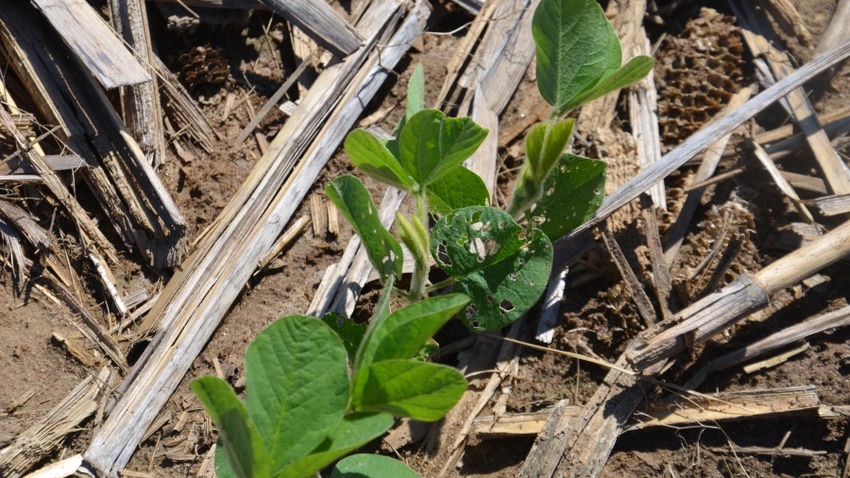Insecticide seed treatment: Weigh cost vs. benefits

We saw bean leaf beetle feeding early last spring. My dealer recommends an insecticide seed treatment. Does early feeding impact yield enough to pay for it? What about an insecticide applied in season if needed?
The Indiana certified crop adviser panel answering this question includes Gene Flaningam, agronomist with Flaningam Ag Consulting LLC, Vincennes; Greg Kneubuhler, agronomist with G&K Concepts Inc., Harlan; and Troy Jenkins, agronomist with Ceres Solutions and 2022 CCA of the Year.
Flaningam: Understanding the life cycle of the bean leaf beetle is important to soybean pest management. Usually, the central Corn Belt has two generations of bean leaf beetles, and you could possibly see up to three generations in southwest Indiana. The beetle tends to overwinter in nearby woodlots or high-residue soybean fields. The beetle usually emerges based upon heat unit development. This cycle usually coincides with the emergence of the soybean plant.
Early soybean feeding can cause excessive plant stress and stand reductions. Controlling the population of the first-generation bean leaf beetle can be a very beneficial strategy for reducing the population of the second generation. In most scenarios, second-generation beetles cause the most economic damage due to soybean pod feeding and grain quality reduction. So yes, a seed treatment can be very beneficial for improving soybean yields and grain quality.
Kneubuhler: We generally see some level of bean leaf beetle feeding each year. However, it most generally is not severe enough to affect yields. There is no real perfect threshold for determining needs for insecticide to be applied in a growing season. An insecticide seed treatment will hold bean leaf beetle pressure quite well. Typically, when a seed treatment is used, the need for an in-crop insecticide is not necessary.
Early-season soybeans can be scouted to determine the amount of cotyledon, stem and foliage feeding damage caused by overwintering adults of bean leaf beetles. Assessing the impact from scouting can determine whether treatment is necessary. It takes a lot of damage to warrant an insecticide application.
Jenkins: Seed-applied insecticides can have proven advantages on insects like bean leaf beetles and soybean aphids. Things to consider include the soybean variety’s risk to bean pod mottle virus, which is transmitted by bean leaf beetle. Also consider your past pest insect history and cropping patterns. Seed treatments should be considered when planting into old pastures, grasslands, Conservation Reserve Program land, decomposing or green cover crops, and manured fields. All of these situations increase the risk for insect issues. Economic consideration for insecticide cost and crop value should be considered.

